Today was bound to be a difficult one for us. We went on a tour of the two camps that lasted all day. The bus ride from Krakow was about 1.5 hours and when we arrived, the setting was bucolic and calm. It was difficult to imagine the chaos that occurred when the trains stopped there to unload unsuspecting people, most of whom would be put to death. The famous sign welcoming the deportees means Work Makes you Free.
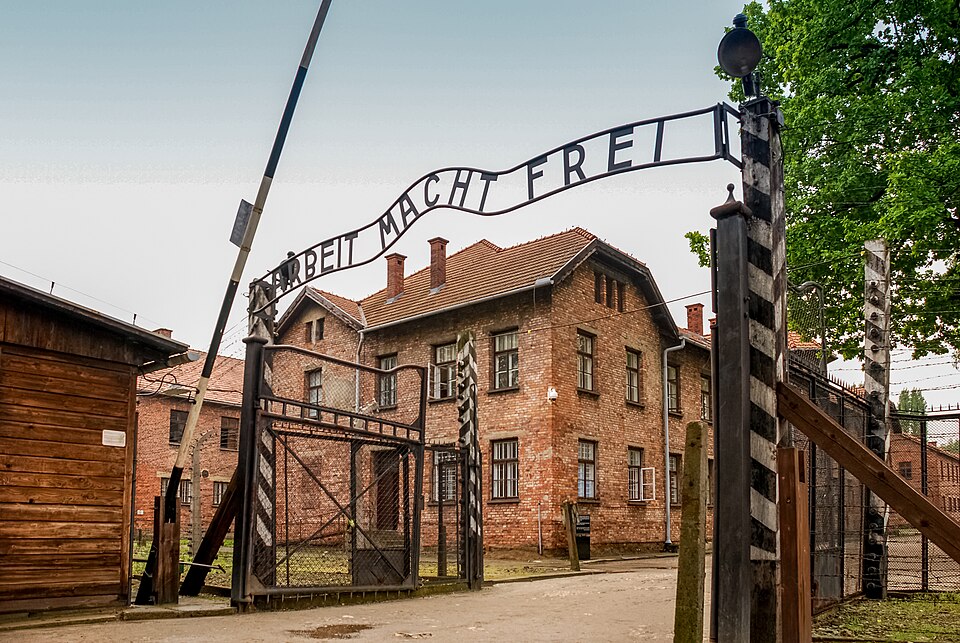
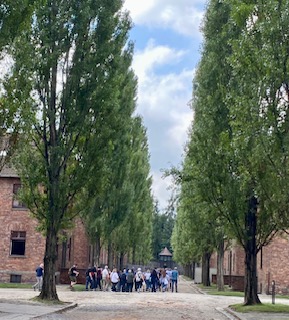
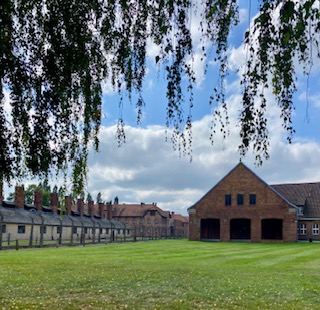
Women and children were told to go to the right, while healthy men and some able-bodied women went to the left. Those who went to the right were immediately exterminated. They arrived in cattle cars, filled to capacity with only a bucket as a toilet in one corner. The journey may have taken as much as four days, depending on where the trip began, with minimal food, light, or air. Many of the prisoners were also tasked with digging ditches for mass graves, or burning the bodies of those who were killed to hide the atrocities that befell them.
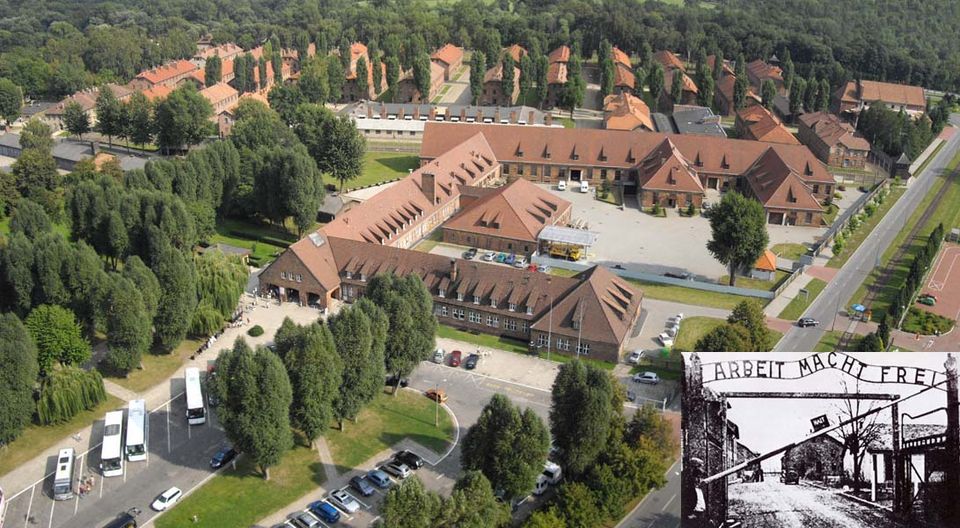
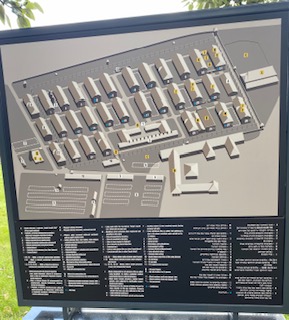
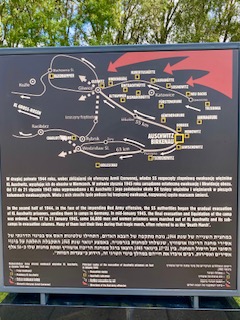

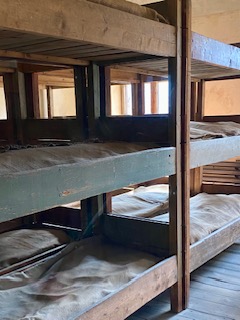
We were one of hundreds of people there to witness the camp. Many of those visitors were not Jewish, but wanted to see this monument to brutality and hatred that awaited those who were taken there. Most of my relatives perished there, but my mother, a few of her sisters, including my living aunt, survived. My aunt’s story was presented by the Arizona Jewish Historical Society on Friday, October 10, recounting, through her daughter (my cousin Cindy), how she lived through this terror at the age of 14. Sadly, she passed away at the age of 96 on October 18 after a fall.
Initially, it was thought that the camp should be destroyed because it was a symbol of what the Polish people knew and did not stop. However, keeping it meant that one will never forget that this could happen again. Anti-Semitism exists in all its forms even today.
I will post the many pictures I took or used that don’t need much commentary. The unspeakable is self-evident. We did not actually see the extermination room where thousands thought they were going to get clean after their journey by having a shower, but instead they were gassed, dying very quickly. Maybe that was a blessing in disguise.
We saw the barracks, the toilets, the enclosures with the shoes, luggage, personal objects, empty cannisters that held the lethal gas, and hair shaved from those who were brought there. In the early days of the war, people were given a tatoo with their prisoner number, but toward the end of the war, when my mother and aunt arrived at Auschwitz, they didn’t even bother. Jews were required to dig the giant pits where the dead bodies were thrown. The Jews who were talented musicians had to play in an orchestra to perform for the Nazi officials. The prisoners were used in many ways to help the Nazi cause, at penalty of death, or worse.
It was a grueling day, filled with sadness and pain for those who endured there. When they were liberated, they started a new life, knowing that the hardship of labor camps and unimaginable atrocities were behind them, yet it will always be a part of who they were. I was told that the generation that followed them (me, included) made sure they were “good” children, who followed the rules, and didn’t disappoint their parents. I would say that this probably was me. Still, I was somewhat of a rebel at times, but never to the extent that would ever cause them pain.
I have not completed this section of the blog because I am unable to upload many of my pictures. However, as soon as I am able, I will add the photos from Auschwitz/Birkenau and many more. Stay tuned…
